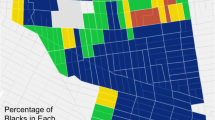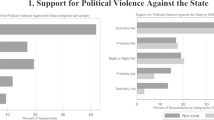Abstract
Throughout the past three decades, changing governments in Denmark have been cultivating a more proactive role for civil society organizations by emphasizing the legitimacy of voluntary social work as part of the social service provision in a hard-pressed welfare state. At the same time, political and public actors praise the civic virtues and democratic skills that volunteers obtain when participating in any kind of voluntary organization. This notion of voluntary organizations as “schools for democracy” already lacks empirical grounding. Given the increased instrumentalization of voluntary social work, it becomes even more important to ask what the modes of participation look like among volunteers within the new organizational forms. In this article, we review key trends and changes at the institutional level and present data from a long-term ethnographic study that explores the mode of participation of volunteers within an organizational form that responds to the demands of the current civic landscape. We demonstrate that while the organizational form in question aptly and strategically navigates the competitive, welfare-oriented, institutional environment, the space for civic action among the volunteers is limited.
Similar content being viewed by others
References
Binder, A. (2007). For love and money: Organizations’ creative responses to multiple environmental logics. Theoretical Sociology, 36, 547–571.
Boesen, B. (2018). Fonde i bevægelse: Fra diskrete velgørere til synlige samfundsaktører. København: DJØF Forlag.
Boje, T. P. (2017). Civilsamfund, medborgerskab og deltagelse. København: Hans Reitzels Forlag.
Boje, T. P., Ibsen, B., Fridberg, T., Habermann, U., Sokolowski, S. W., & Salamon, L. M. (2017). Denmark: A social democratic pattern with a twist. In L. M. Salamon, S. W. Sokolowski, & M. A. Haddock (Eds.), Explaining civil society development. A social origins approach. Baltimore: Johns Hopkins University Press.
Brudney, J. L., & Meijs, L. C. P. M. (2009). It ain’t natural. Toward a new (natural) resource conceptualization for volunteer management. Nonprofit and Voluntary Sector Quarterly, 38(4), 564–581.
De Waele, E., & Hustinx, L. (2018). Governing through volunteering: The discursive field of government-initiated volunteering in the form of workfare volunteering. Nonprofit and Voluntary Sector Quarterly. https://doi.org/10.1177/0899764018783094.
Dekker, P. (2014). Tocqueville did not write about soccer clubs: Participation in voluntary associations and political involvement. In M. Freise & T. Hallmann (Eds.), Modernizing democracy: Associations and associating in the 21st century. New York: Springer.
DiMaggio, P. J., & Powell, W. W. (1991). The iron cage revisited: Institutional isomorphism and collective rationality in organization fields. In W. W. Powell & P. J. DiMaggio (Eds.), The new institutionalism in organizational analysis. London: The University of Chicago Press.
Eimhjellen, I. (2018). New forms of civic engagement. Implications of social media on civic engagement and organization in Scandinavia. In L. S. Henriksen, K. Strømsnes, & L. Svedberg (Eds.), Civic engagement in Scandinavia. Volunteering, informal help and giving in Denmark, Norway and Sweden. Cham: Springer.
Eliasoph, N. (2009). Top down civic projects are not grass roots associations: How the differences matter in every day life. Voluntas: International Journal of Voluntary and Nonprofit Organizations, 20(3), 291–308.
Eliasoph, N. (2011). Making volunteers: Civic life after welfare’s end. Princeton, NJ: Princeton University Press.
Fridberg, T., & Henriksen, L. S. (Eds.). (2014). Udviklingen i frivilligt arbejde 2004–2012. København: SFI. (Rapport 14:09).
Garrow, E., & Hasenfeld, Y. (2014). Social enterprises as an embodiment of a neoliberal welfare Logic. American Behavioral Scientist, 58(11), 1475–1493.
Goss, K. (2010). Civil society and civic engagement: Towards a multi-level theory of policy feedbacks. Journal of Civil Society, 6(2), 119–143.
Grubb, A. (2016). Vi skal bare hjaelpe og spise chokoladekiks: En kvalitativ undersøgelse af unge frivilliges deltagelse i en ikke-medlemsbaseret, digitalt koordineret organiseringsform af frivilligt socialt arbejde. Ph.D. Dissertation. Aalborg: Aalborg University Press.
Heimer, C. (1999). Competing institutions: Law, medicine, and family in neonatal intensive care. Law and Society Review, 33(1), 17–66.
Henriksen, L. S., & Bundesen, P. (2004). The moving frontier in Denmark: Voluntary-state relationships since 1850. Journal of Social Policy, 33(4), 605–625.
Henriksen, L. S., Strømsnes, K., & Svedberg, L. (Eds.). (2018). Civic engagement in Scandinavia. Volunteering, informal help and giving in Denmark, Norway and Sweden. Cham: Springer.
Herz, M. (2016). Then we offer them a new project: The production of projects in social work conducted by civil society in Sweden. Journal of Civil Society, 12(4), 365–379.
Hooghe, M., & Oser, J. (2015). The rise of engaged citizenship: The evolution of citizenship norms among adolescents in 21 countries between 1999 and 2009. International Journal of Comparative Sociology, 56(1), 29–52.
Hustinx, L. (2010). Institutionally individualized volunteering: Towards a late modern re-construction. Journal of Civil Society, 6(2), 165–179.
Hustinx, L. (2014). Volunteering in a hybrid institutional and organizational environment: An emerging research agenda. In M. Freise & T. Hallmann (Eds.), Modernizing democracy: Associations and associating in the 21st century. New York: Springer.
Hustinx, L., & de Waele, E. (2015). Managing hybridity in a changing welfare mix: Everyday practices in an entrepreneurial nonprofit in Belgium. Voluntas: International Journal of Voluntary and Nonprofit Organizations, 26(5), 1666–1689.
Hustinx, L., de Waele, E., & Delcour, C. (2015). Hybridization in a corporatist third sector regime: Paradoxes of the ‘responsibilised autonomy’. Voluntary Sector Review, 6(2), 115–134.
Ibsen, B., & Espersen, H. (2016). Kommunernes samarbejde med civile aktører. Odense: KORA og Syddansk Universitet.
Ilcan, S., & Basok, T. (2004). Community government: Voluntary agencies, social justice, and the responsibilization of citizens. Citizenship Studies, 8(2), 129–144.
la Cour, A. (2014). Frivillighedens logik og dens politik: En analyse af den personrettede frivillige sociale indsats og statens frivillighedspolitik. Frederiksberg: Nyt fra Samfundsvidenskaber.
Lichterman, P. (2006). Social capital or group style? Rescuing Tocqueville’s insights on civic engagement. Theory and Society, 35, 529–563.
Lictherman, P., & Eliasoph, N. (2003). Culture in Interaction. American Journal of Sociology, 108(4), 735–794.
Lictherman, P., & Eliasoph, N. (2014). Civic action. American Journal of Sociology, 120(3), 798–863.
Lorentzen, H., & Henriksen, L. S. (2014). The invention and institutionalization of volunteer centers: A comparative analysis of Norway and Denmark. Nonprofit and Voluntary Sector Quarterly, 43(3), 589–608.
Lorentzen, H., & Hustinx, L. (2007). Civic involvement and modernization. Journal of Civil Society, 3(2), 101–118.
Luhtakallio, E., & Eliasoph, N. (2014). Ethnography of politics and political communication: Studies in sociology and political science. In K. Kenski & K. H. Jamieson (Eds.), Oxford handbook of political communication. Oxford: Oxford University Press. https://doi.org/10.1093/oxfordhb/9780199793471.001.0001.
Meijs, L. C. P. M., & Hogstad, E. (2001). New ways of managing volunteers: Combining membership management and programme management. Voluntary Action, 3(3), 41–61.
Musick, M. A., & Wilson, J. (2008). Volunteers. A social profile. Bloomington, IN: Indiana University Press.
Pache, A.-C., & Santos, F. (2013). Inside the hybrid organization: Selective coupling as a response to competing institutional logics. Academy of Management Journal, 56(4), 972–1001.
Qvist, H. P. Y., Henriksen, L. S., & Fridberg, T. (2018). The consequences of weakening organizational attachment for volunteering in Denmark, 2004–2012. European Sociological Review. https://doi.org/10.1093/esr/jcy030.
Rambøll, (2017). Frivillighedsundersøgelsen. København: Børne- og Socialministeriet.
Selle, P. (2013). Reflektioner kring medlemsmodellens betydelse. In I. L. Trägårdh, P. Selle, L. S. Henriksen, & H. Hallin (Eds.), Civilsamhället klämt mellan stat och kapital. SNS Förlag: Stockholm.
Selle, P., Strømsnes, K., Svedberg, L., Ibsen, B., & Henriksen, L. S. (2018). The Scandinavian organizational landscape: Extensive, deviant and important. In L. S. Henriksen, K. Strømsnes, & L. Svedberg (Eds.), Civic engagement in Scandinavia. Volunteering, informal help and giving in Denmark, Norway and Sweden. Cham: Springer.
Sievers, S. M. M. (2016). Fragile heterotopias: A case study of a Danish social enterprise. Community Development Journal, 51(1), 77–94.
Sivesind, K. H. (2017). The changing roles of for-profit and nonprofit welfare provision in Norway, Sweden, and Denmark. In K. H. Sivesind & J. Saglie (Eds.), Promoting active citizenship? Markets and choice in Scandinavian Welfare. Cham: Palgrave Macmillan.
Skelcher, C., & Smith, S. R. (2015). Theorizing hybridity: Institutional logics, complex organizations, and actor identities: The case of nonprofits. Public Administration, 93(2), 433–448.
Thornton, P., Ocasio, W., & Lounsbury, M. (2012). The institutional logics perspective: A new approach to culture, structure, and processes. Oxford: Oxford University Press.
Toubøl, J. (2017). Differential recruitment to and outcomes of solidarity activism: Ethics, values and group style in the Danish refugee solidarity movement. Ph.D. dissertation. Department of Sociology, University of Copenhagen.
von Essen, J., Frederiksen, M., & Loga, J. (2018). The ambiguities of volunteering. In L. S. Henriksen, K. Strømsnes, & L. Svedberg (Eds.), Civic engagement in Scandinavia. Volunteering, informal help and giving in Denmark, Norway and Sweden. Cham: Springer.
Wollebæk, D., & Aars, J. (2011). Har de vokst det av seg? Generasjons- og livsfaseforklaringer på ungdoms holdninger til frivillig organisering. Tidsskrift for ungdomsforskning, 11(1), 33–48.
Acknowledgements
The authors wish to thank the editors of this special issue of Voluntas along with Morten Frederiksen, Nina Eliasoph, Lesley Hustinx, participants at the round table of ISTR 2016 and researchers from the research group Castor at Aalborg University, for inspiring and insightful comments.
Funding
The empirical study, on which the last part of the article is based, was conducted as part of Ane Grubb's doctoral thesis that was partly funded by a grant (§ 15.75.09.30—“Research on civil society and volunteering”) from the Danish Ministry of Social Affairs.
Author information
Authors and Affiliations
Corresponding author
Ethics declarations
Conflict of interest
The authors declare that they have no conflict of interest.
Rights and permissions
About this article
Cite this article
Grubb, A., Henriksen, L.S. On the Changing Civic Landscape in Denmark and its Consequences for Civic Action. Voluntas 30, 62–73 (2019). https://doi.org/10.1007/s11266-018-00054-8
Published:
Issue Date:
DOI: https://doi.org/10.1007/s11266-018-00054-8




